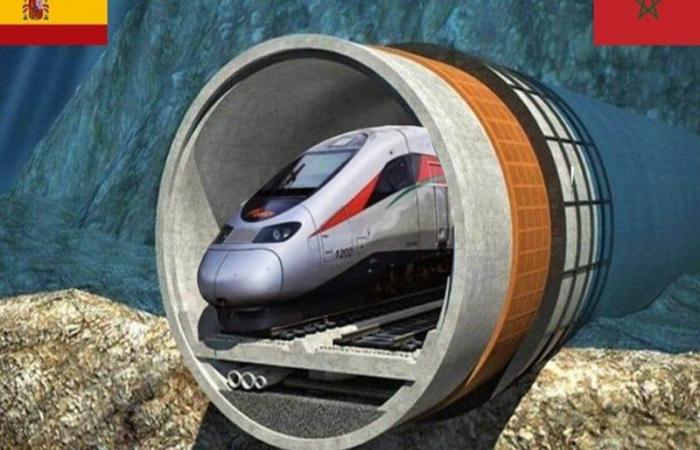It seems that the underwater tunnel linking Africa to Spain is not just a concern for the two countries concerned. Forbes, the American business magazine, recently reacted to this innovative project. “Within five years, you could board a high-speed train in Madrid and travel from Spain to Casablanca in five and a half hours thanks to a new tunnel under the Strait of Gibraltar. This idea, which seems to come from a novel by Jules Verne, was initially discussed by Spain and Morocco in 1979. Feasibility studies were carried out until 1981, but the project did not advance further. beyond this stage,” says the magazine.
Today, Spain and Morocco are re-evaluating this ambitious initiative, particularly in view of the 2030 FIFA World Cup. For the first time, this event will mark the co-hosting by three countries from two continents: Spain , Morocco and Portugal. Fans will want to travel between these countries to attend matches as quickly and efficiently as possible, and what better way to meet this challenge than an underwater rail tunnel.
Indeed, the Moroccan National Society for Strait Studies (SNED) announced that it had started viability studies for the project, named the Europe-Africa Fixed Link of the Strait of Gibraltar. Spain also initiated studies in 2023 under the aegis of the Spanish Society for Fixed Communication Studies across the Strait of Gibraltar (SECEGSA).
“The project gained relevance after the inauguration of Morocco’s first high-speed train, linking Casablanca to Tangier, in 2023. This train, the fastest on the African continent, demonstrated the country’s capacity to undertake large-scale railway projects. wingspan”, we report.
The Strait of Gibraltar, at its narrowest point, is only 14 kilometers wide. Studying the project carefully, the magazine projects a situation: “Now imagine the convenience of an underwater high-speed rail tunnel connecting Spain and Morocco. This tunnel could reduce travel time from Madrid to Casablanca to just five and a half hours, a significant improvement over the 12 hours needed today by car and ferry, or the two-hour flight, the latter requiring additional time travel to and from airports”.
Starting from Madrid, the train would make a stop in the Spanish city of Algeciras, at the southern tip of the Iberian Peninsula, near the Strait of Gibraltar. It would then enter a tunnel under the strait, connecting Punta Paloma in Spain to Punta Malabata in Morocco. The next stop would be the city of Tangier, before reaching the final destination in Casablanca. The segment between Algeciras and Tangier would be approximately 42 kilometers, of which 27 kilometers would be in an underwater tunnel. At its lowest point, the tunnel would be approximately 470 meters below sea level, with a maximum gradient of approximately 3%.
This would be the first rail link between the two continents. In addition to the World Cup interest, this tunnel would open and connect the existing rail networks of the two countries, and beyond. SECEGSA believes that “could transport up to 12.8 million passengers annually between continents. Construction costs, although not definitively established, are estimated between $7 and $8 billion”.
To date, no deadline or start date for the project has been set. Funding should come mainly from the countries concerned, Spain and Morocco, with potential support from the European Union. “In a context where high-speed trains are gaining popularity in Europe, this project stands out for its inventiveness and audacity, giving hope for a possible realization in the near future.”, concludes Forbes.






